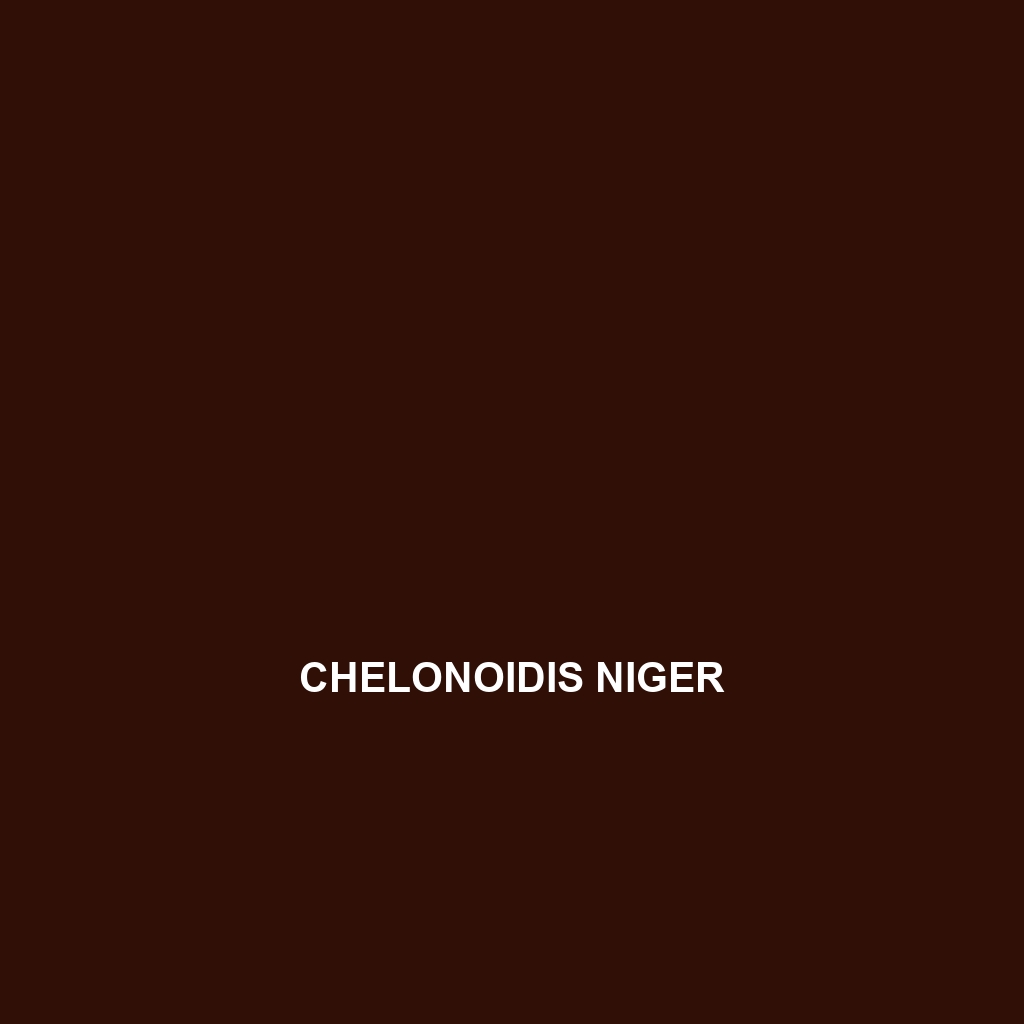Species Description: Chelonoidis niger
Common Name: Chelonoidis niger
Scientific Name: Chelonoidis niger
Habitat
Chelonoidis niger, commonly known as the Galápagos giant tortoise, is primarily found in the Galápagos Islands, located in the Pacific Ocean, about 1,000 kilometers off the coast of Ecuador. These tortoises inhabit a range of environments, including arid lowlands, lush highlands, and volcanic terrains. Their diverse habitats enable them to adapt to varying temperatures and vegetation.
Physical Characteristics
The Galápagos giant tortoise can reach impressive sizes, often weighing between 200 to 300 kilograms (440 to 660 pounds) and measuring up to 1.2 meters (4 feet) in length. They are characterized by their large, dome-shaped shells, which come in various colors including dark brown to black and sometimes exhibit subtle patterns. Their long necks and sturdy limbs facilitate movement across rocky terrains, while their distinctive beak-like jaws are adapted for grazing.
Behavior
Chelonoidis niger displays interesting behaviors such as basking in the sun, which is essential for regulating their body temperature. They are generally solitary creatures but can be seen congregating at watering holes. Their slow movements and calm demeanor often attract attention, making them a subject of fascination for wildlife enthusiasts and researchers alike.
Diet
As herbivores, Chelonoidis niger primarily feeds on a variety of plant matter, including grasses, leaves, fruits, and flowers. They are known to occasionally consume cacti and other succulents. Their feeding habits are crucial for maintaining the ecological balance of the Galápagos Islands, as they help in seed dispersal and vegetation management.
Reproduction
The reproductive habits of Chelonoidis niger involve a mating season that typically occurs from January to March. Females can lay anywhere from 2 to 16 eggs per clutch, which are buried in sandy nests. The eggs incubate for about 120 to 150 days before hatching. Notably, hatchlings are vulnerable to various predators, making the first few years critical for their survival.
Conservation Status
Currently, Chelonoidis niger is listed as a vulnerable species on the IUCN Red List. The primary threats to their population include habitat destruction, invasive species, and human activities. Conservation efforts are vital to protect their remaining habitats and ensure the continuation of this iconic species.
Interesting Facts
One fascinating fact about Chelonoidis niger is that they can live over 100 years, with some individuals documented to live well past 150 years. These tortoises also played a significant role in Charles Darwin’s theory of evolution, as their varied physical traits across different islands contributed to his studies on natural selection.
Role in Ecosystem
Chelonoidis niger plays a crucial role in its ecosystem by aiding the growth of plant species through seed dispersal and maintaining the health of their habitats. Their grazing habits help control vegetation growth, ensuring balance within the ecological communities of the Galápagos Islands.
